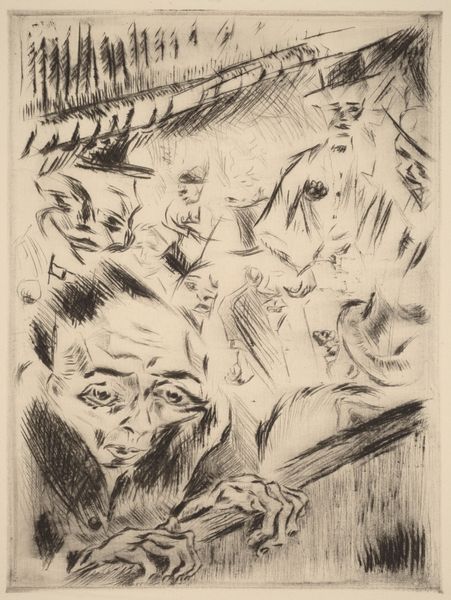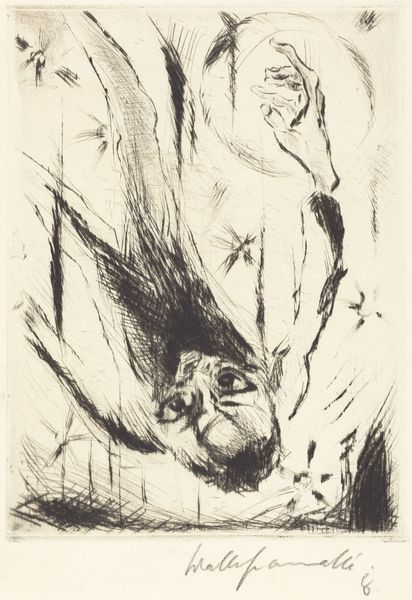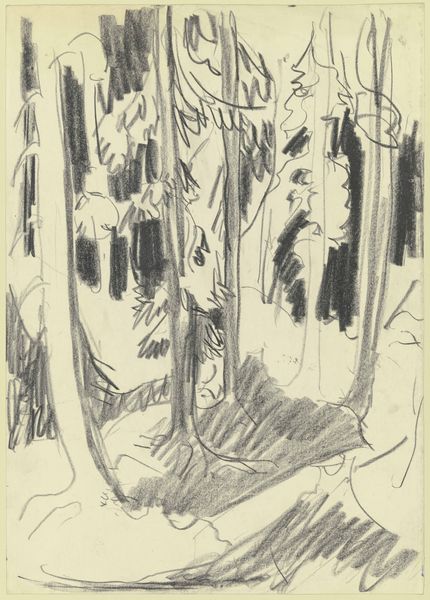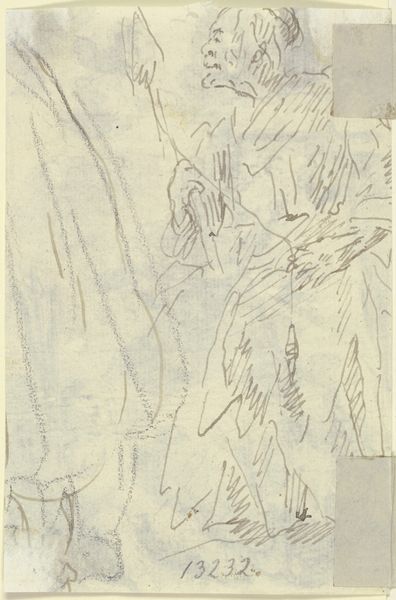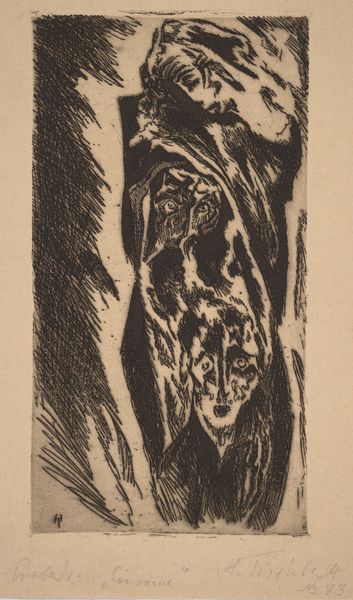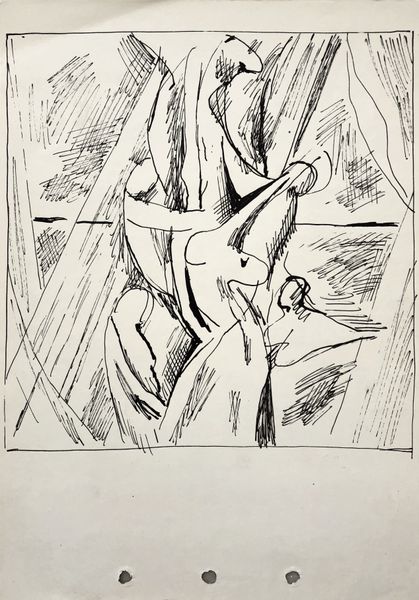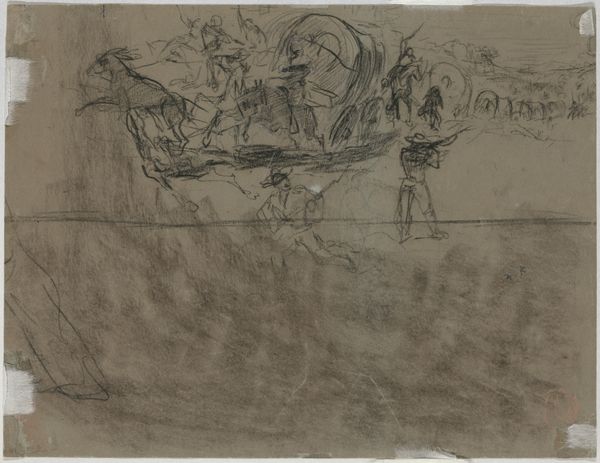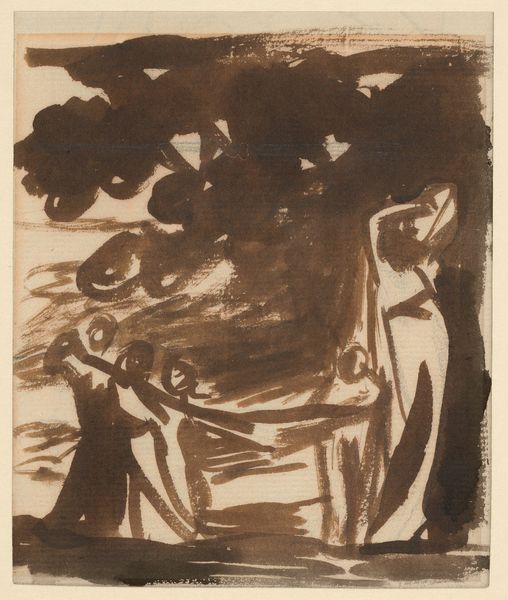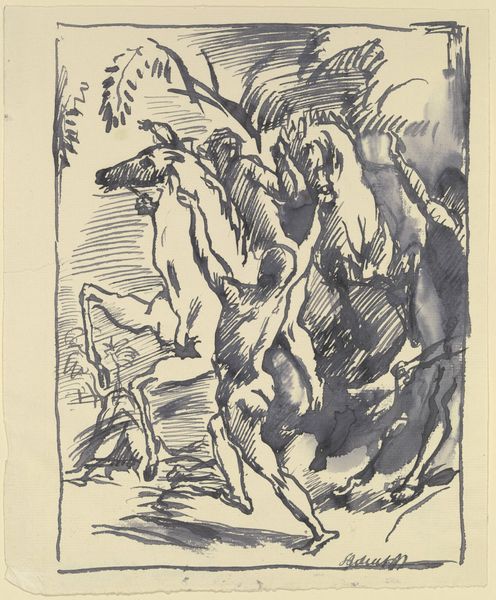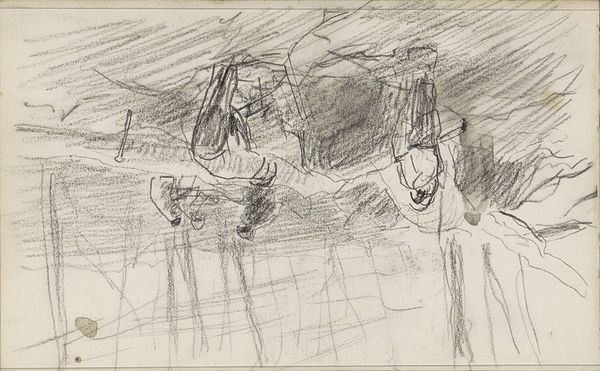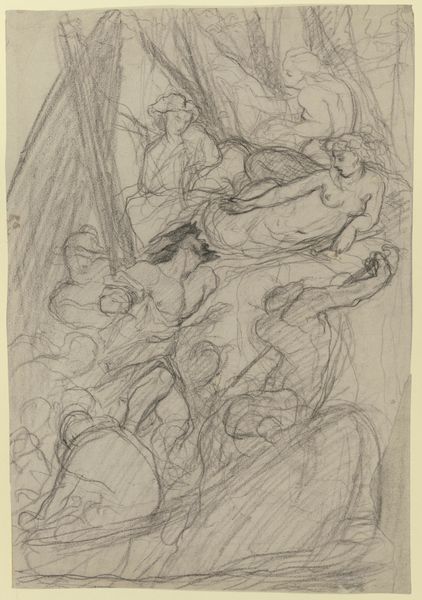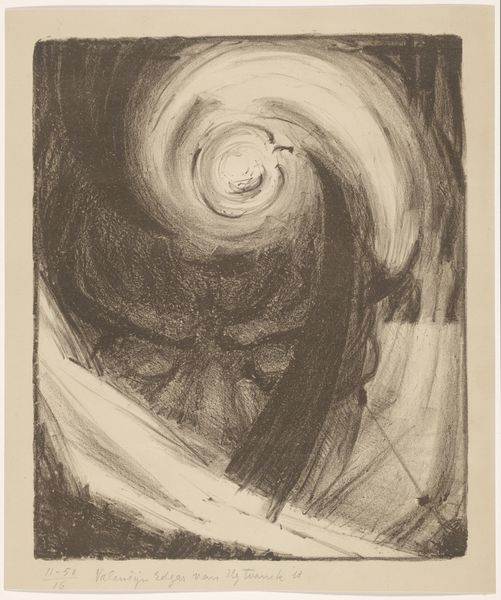
print, etching
#
portrait
#
narrative-art
# print
#
etching
#
german-expressionism
#
figuration
#
pencil drawing
Dimensions: sheet: 38.7 × 29 cm (15 1/4 × 11 7/16 in.) plate: 17 × 12.5 cm (6 11/16 × 4 15/16 in.)
Copyright: National Gallery of Art: CC0 1.0
Curator: Ah, here we have Walter Gramatté's "Scene in the Cafe with the Cripple," etched in 1918. Editor: It’s striking—that stark, almost grotesque central figure really pops against the swarm of, are those patrons? It has a wonderfully disturbing edge. Curator: Disturbing indeed. Note the distinct compositional choices; how the artist uses the etching technique to render shadow and light, creating this disquieting, emotionally fraught tableau. The crowd scenes offer visual rhymes in contrast with that larger central figure. Editor: Right, the contrast… It makes him look like he's presiding over some fever dream. And the faces in the crowd—some of them seem consumed with anger. Is that the cafe crowd or something else? What exactly is going on here? Curator: That’s the beauty of it; it’s not explicit. The figure stands prominently, one arm gestures towards these figures in the background and faces in the foreground. He’s not a literal cripple but something that symbolizes broader societal and individual psychic anxieties. Think about what post-World War I Europe represented; a landscape riddled with physical and psychological trauma. It creates the symbolism—it gives an iconographic reading to it, linking suffering, spectacle, and the human condition. Editor: Wow, trauma distilled into lines and shading! It's not just about what you see, is it? There’s the symbol lurking in those expressive sketches…a sense of fractured perception that echoes expressionist philosophy itself. Curator: Precisely. That's Gramatté’s genius, isn't it? This image encapsulates both personal and collective experience using expressive distortions, stark shadows, and emotionally evocative body language. This goes well beyond just portraying people at a café. Editor: You're right. I walked into it thinking of it as some casual scene but now I can see how everything is weighed with an uneasy kind of feeling. It’s quite masterful how he renders that unease in such a way as if you also have walked into an asylum with patients having all sorts of symptoms. Curator: Gramatté presents something deeply complex that extends the dialogue about our place and status in history. Editor: A perfect moment of reflection offered through artistic rendering; its echoes reverberate even now. Thank you!
Comments
No comments
Be the first to comment and join the conversation on the ultimate creative platform.
